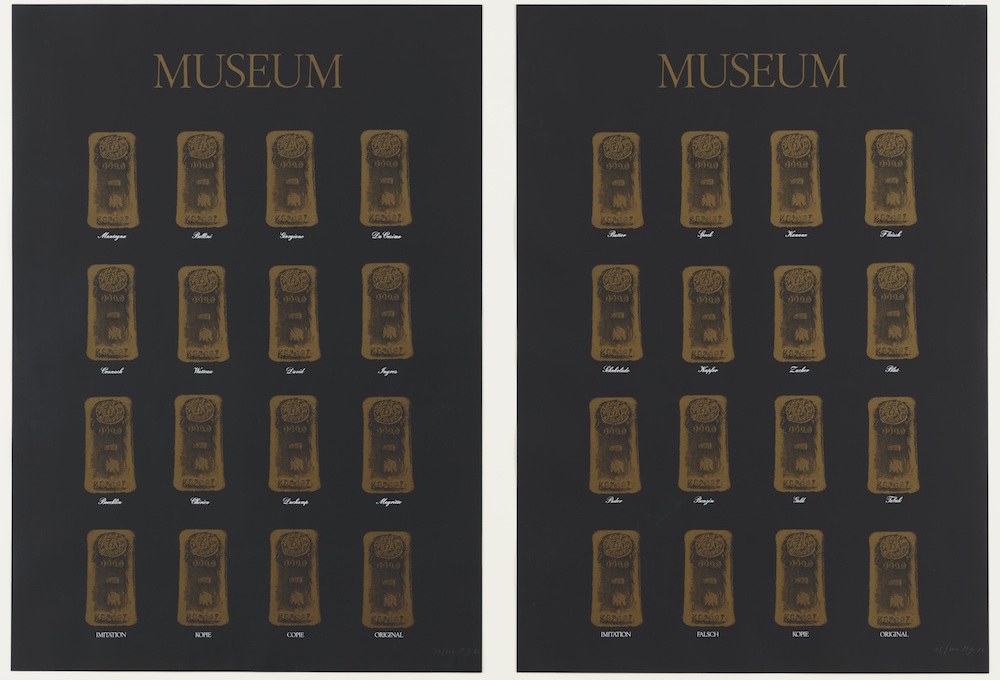Art & Exhibitions
Marcel Broodthaers Nibbled the Hand that Fed Him
THE DAILY PIC: At MoMA, he probes the institutions that made his art possible.

THE DAILY PIC: At MoMA, he probes the institutions that made his art possible.

Blake Gopnik


THE DAILY PIC (#1546): This will be the last of my Daily Pics dedicated to Marcel Broodthaers, if only because Sunday is the last day of the giant Broodthaers survey at the Museum of Modern Art in New York.
Thinking back on what I’ve written so far on the Belgian, I realize that I’ve barely touched on him as the godfather of what’s come to be called “Institutional Critique,” the artistic movement that takes as its subject the failings of the institutions that art comes wrapped in in our era – meaning, of course, our museums. (I guess the commercial world seems so evidently corrupt that mounting a critique of it would be wasted breath.) In today’s Pic from MoMA’s own collection, titled Museum-Museum and screenprinted in 1972, Broodthaers posits an equivalence between the great names of art and so many bricks of gold bullion. So much for art’s aspirations toward the transcendent and unworldly.
At a recent dinner party, a couple of sophisticated French artists were lambasting the MoMA exhibition as an oxymoronic absurdity: the most museum-ish, institutionalist of museums mounting a show of art that is all about attacking such institutions. A few nights ago, I heard MoMA curator Christophe Cherix acknowledging that conundrum, and the challenges it posed for his show.
But I think it’s important to realize that Broodthaers’s entire career involved a willed embrace of the institutions of art – he had been a poet first, and could have remained one – and an acknowledgment that those same institutions allowed him to do cultural work that might not have been possible anywhere else.
He chose to have his first show as a visual artist in a commercial art gallery, after all (“I too wondered if I couldn’t sell something and make a success of my life,” he wrote on the announcement) and his last years came packed with museum exhibitions.
I don’t think Broodthaers was truly against the institutions of art. He couldn’t be, since those institutions are actually what define art as art, at least in the terms that we understand now. (Philosophers describe this as – surprise, surprise – the “institutional theory of art”). I think Broodthaers simply realized that one of the great subjects for art, institutionalized as it must be, is its own institutionalism. (© 2016 Estate of Marcel Broodthaers / Artists Rights Society (ARS), New York / SABAM, Brussels)
For a full survey of past Daily Pics visit blakegopnik.com/archive.